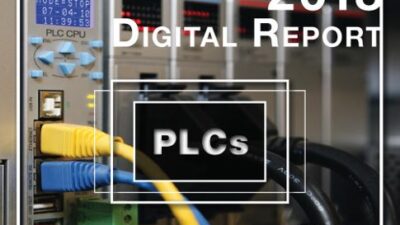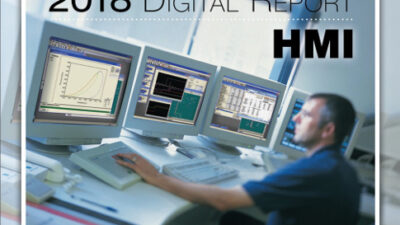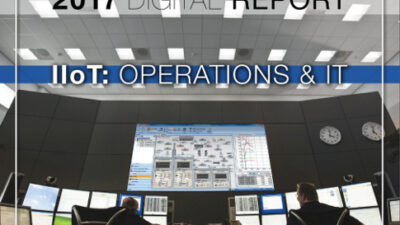Did you go? If not (or even if so) take a look at this look back at Hannover Fair 2008 (more photos and links follow) for more controls, automation, robotics, industrial computers, networks, and instrumentation than most people ever see in one location. Highlights include....
Hannover, Germany – Did you go? If not (or even if so) take a look at this look back at Hannover Fair 2008 (more photos and links follow) for more controls, automation, robotics, industrial computers, networks, and instrumentation than most people ever see in one location. Concluding its latest successful run (April 21-25, 2008), Hannover Industrial Fair hosted 200,000 visitors who came to see and sample technology offerings of 5,100 exhibitors. The fair continues to grow more international as nearly half of exhibitors came from 62 nations outside of Germany. For more about the Fair’s statistics and other related articles, browse other Control Engineering Hannover Fair coverage .Visitor count for 2008 includes 20,000 students, who represent potential new entrants into technology fields vital to the continued health of modern industry in any developed nation. Various German technical organizations and schools encourage student interest in the fair and several major exhibitors partner with schools to sponsor student attendance. Indeed, it was a surprise to learn of a serious shortage of engineers and technical personnel ongoing in Germany, of all places!Besides exhibits, Hannover Fair delivered its message via corporate conferences, expert panels, tutorials, and direct access to key technology developers that buyers and technical professionals can put to profitable use. Corporate, market At notable press conferences, Siemens and Bosch Rexroth updated current developments and their vision for the near future.
Dr. Heinrich Hiesinger, new CEO of Siemens AG Industry Sector. (Source: Siemens AG.)
Dr. Heinrich Hiesinger, member of the managing board of Siemens AG and new Industry Sector CEO, presented a status report on this recently formed business sector—one of three into which Siemens was recently reorganized. The Industry Sector represents a business roughly€40 billion in sales and consists of six divisions, among them, Industry Automation and Drive Technologies, and ranging as well into transportation, lighting, and building technologies. Energy and Healthcare make up Siemens’ other two sectors.Hiesinger’s presentation, “Answers for Industry,” alluded to the company’s 160-year history of achievements, while noting that Siemens’ realignment was done for the sake of reducing complexity and to be more competitive. “The new organizational setup will enable Siemens divisions [within the Industry Sector] to concentrate more intensely on their core competences and individual growth segments,” he said. The six divisions intend to work closely together.“We will intensify efforts to gear our products toward standardized platforms for drives, automation and software, thus contributing to the success of our solutions in production, transportation and building technologies,” Hiesinger stated.
“Increase your productivity” was the theme of Siemens’ redesigned 4,500 sq m exhibit, featuring an automobile production line in partnership with Volkswagen. It demonstrated productivity—from raw materials processing, plant layout, and product/factory simulation to automated machining centers and material handling systems. (Source: Control Engineering, F. Bartos.)
One key driver for Siemens is greater productivity through well-tuned hardware and software technologies, he noted. The near-term goal is to link product development with real manufacturing—via one combined software for product lifecycle management (PLM) and manufacturing execution systems (MES). “The largest strategic change at Siemens is unifying the project lifecycle management and automation worlds,”Speaking for the first time in his new position as CEO of Bosch Rexroth AG , Dr. Albert Hieronimus delivered a positive outlook on current and near-future business of his company. He cited overall sales growth of 8.8% for 2007—over the prior year—led by double-digit sales expansion in Central and Eastern Europe, similar growth in China and India, plus 8.3% increase in Germany.Sales in North and South America dipped 5.5% versus 2006, mainly due to the weakening U.S. dollar. “The economic situation in the USA is not expected to improve in 2008. Still, the U.S. remains an extremely important market for Bosch Rexroth,” Hieronimus said. Prime growth opportunities are seen in renewable energy, semiconductor, and medical sectors.
“We expect a double-digit percentage increase in sales for 2008,” based on expanding order volumes and capacities.—Dr. Albert Hieronimus, CEO Bosch Rexroth AG. (Source: Bosch Rexroth.)
Hieronimus also spoke about innovative Bosch Rexroth developments in different areas of energy. One example is cutting fuel consumption in mobile machinery via a hydrostatic regenerative brake (HRB) system that hydraulically stores energy generated during braking. Normally lost stored braking energy is fed back to the power train when the vehicle starts to move. This effectively reduces power take-off from the diesel engine—significantly lowering fuel consumption. Fuel savings increase with shorter travel cycles, for example, with forklifts and municipal waste disposal vehicles. Bosch Rexroth claims up to 25% reduction in diesel fuel usage in mobile machines with short travel cycles.Vehicle field tests with HRB systems have been done in several U.S. cities, with further prototype testing to be done in 2008 in Germany and the U.S. A disposal vehicle fitted with HRB is already in use in Berlin, according to the company.Other R&D activity areas for energy-efficiency at Bosch Rexroth include factory automation, productivity improvement in machinery, and renewable energy. Wind and ocean energy converters were prior focus areas for “renewables.” Today, expertise also extends to the all stages of solar cell manufacturing. Standards developments SERCOS International (SI) updated various recent developments. Its latest digital communication interface—SERCOS III—with 100 Mbit/s bidirectional Ethernet has reached standards status in November 2007 as part of IEC 61158/61784. At the Fair, SI announced release of the specification “CIP Safety on SERCOS,” which is based on CIP Safety protocol of the Open DeviceNet Vendors Association ( ODVA ). CIP stands for “common industrial protocol.” The protocol enables safe data transmission over SERCOS III up to safety integrity level (SIL 3) per IEC 61508. “SERCOS’ messaging protocol (SMP) allows representation of CIP data and services on configured, cyclic data containers in the SERCOS telegram,” says Peter Lutz, SERCOS managing director.Lutz mentioned further ongoing work to ensure that different master/slave types are compatible with SERCOS III. He also noted that SERCOS applications are widening into areas such as general automation, food/packaging, and printing. SERCOS (serial real-time communication system) is intended for networking industrial controls, motors, and distributed peripheral devices.“Logic, motion, and safety” combined in one software environment is one the newest initiatives at PLCopen , an organization devoted to industrial standards development. One environment “offers less educational effort and simpler transfer of knowledge and application software among different people, locations, and controls,” states Eelco van der Wal, managing director of PLCopen. “Also, it tackles the‘not-invented-here syndrome’—often a cause of errors and added costs, especially for safety applications.” The recently published Logic, Motion, and Safety document (V. 0.41) provides examples and guidance for these combination technologies.Other PLCopen developments include version 0.4 release of Motion Control (part 3)–User Guidelines and release for comments (V. 0.99) of part 4–Coordinated Motion. Part 3 has the objective to define examples and clarification for users of other PLCopen Motion Control documents. It shows users how to generate libraries dedicated to their specific applications.Document part 4 is intended for coordinated 3-D motion. The approach presented works without a master axis Instead, it uses several coordinate systems (axes, machine, and product-specific) plus a kinematic model of the mechanics, according to van der Wal. “By combining axes in a group one knows upfront which axes are involved [in case of an error] and there is basis for better error behavior,” he says. This improves on master/slave axes methods, where individual axes have no knowledge of the error and may continue their movement, explains van der Wal. Process automation, PC-based control Process and factory automation technologies shared equal exposure in ABB ’s large stand—among them, flowmeters, temperature transmitters, ac drives, wireless technology, bus systems, and DIN-rail components. One product highlight was a new line of FlowMaster electromagnetic flowmeters launched in three application-specific versions: industrial processes, water management, and hygienic (food, beverage, pharmaceutical) processes. All flowmeter versions come with highly modular design.Also, Machinery Drive (ACSM1) variable-frequency drives in the 0.75-110 kW (1-150 hp) size range continue to be popular with OEMs, according to Roelof Timmer, marketing manager for automation products at ABB. “ACSM1 comes close to delivering servo drive performance,” he said. Other notable product offerings were new HD circuit breakers for marine applications; and PST soft starters with software control of torque, for example, to limit water hammer surges.In business news, ABB announced first-quarter net income of $1 billion, an increase of 87% over the same quarter in 2007. This was attributed to global demand for more reliable power, continued improvement of industrial efficiency, and the company’s efforts to improve operational performance. In addition, “ABB experienced a very good start in 2008 across all businesses and regions,” said Michel Demare, ABB’s chief executive officer and CFO. Beckhoff Automation , a long-standing advocate of PC-based control technology, cited substantial growth over the past year for its EtherCAT automation suite with real-time networking using Ethernet. It now is supported by some 10 operating systems and an 800-member user organization, EtherCAT Technology Group , noted Graham Harris, president of Beckhoff North America. EtherCAT is an IEC standard and more recently a SEMI (Semiconductor Equipment and Materials International) standard. ASIC and FPGA devices also are available for EtherCAT.Beckhoff now is exclusively shipping its own make of servo drives, the AX5000 series, which is gaining momentum with customers, according to Harris. New models have extended the size range of AX5000 drives to 18 A and 25 A rated current. Ability to easily connect to synchronous, induction, linear, and torque motor types of various sizes enhances the flexibility of these drives.Among numerous Beckhoff introductions at the fair was a new safety controller with “Safety over EtherCat” protocol, offering reduced wiring and other system streamlining benefits. An associated I/O module with SIL 3 capability also was introduced. Notable anniversaries In a departure from last year’s ecological motif for its exhibit, Danfoss focused on important company milestones in 2008. This year marked the 75th anniversary of the founding of Danfoss. Meanwhile, the company’s VLT Drive product celebrated its 40th year—a remarkable run for one brand of variable-frequency drive (VFD) that today spans an output range of 0.25-1,200 kW (0.33-1,600 hp). By the way, an historical overview article about ac drives www.controleng.com/article/CA450388.html in Control Engineering’s 50th anniversary issue (September 2004www.controleng.com/article/CA490490.html) used VLT Drives to graphically illustrate major physical size reduction of VFDs over time.There was another anniversary of note. The 50th anniversary of Siemens’ flagship Simatic product line of programmable logic controllers (PLCs) and other automation products also takes place in 2008.
Kontron’s “nano” form factor Computer-on-Module is designed as an extension of the COM Express specification. (Source: Kontron AG.)
Kontron AG continued its rollout of new board-level and computer products. Among these was a pair of computer-on-module boards, in “micro” and “nano” versions. Credit-card sized (55 x 84 mm) nanoETXexpress-SP Computer-on-Module is based on Intel’s low-power Atom processor Z5xx series (1.1-1.6 GHz clock speed), which together with a single-chip chipset reportedly dissipates less than 5 W of power. “Compared to other low-power processors the new chipset uses only one-tenth the energy. Moreover, the module doesn’t need a fan,” said Norbert Hauser, VP marketing at Kontron. This opens more applications for the nano Computer-on-Module, such as mobile monitoring, HMI for automation, and embedded systems, he explains.The micro format board (95 x 95 mm)—microETXexpress-SP Computer-on-Module—uses the same Intel processor and offers the commonly used COM Express Type 2 connector, including serial digital video output (SDVO) graphics. This slightly larger board is intended for stationary embedded applications, adds Hauser. Robots galore Robotic technology was evident throughout the fair. Product examples ranged from small service robots to rapid-motion pick-and-place units to large manufacturing robots. One special display, “Mobile Robots & Autonomous Systems,” brought together nearly 30 exhibitors to demonstrate the latest mobile system applications and related robotic components.
Kuka’s KR 1000 Titan robot incorporates nine electric motors with a combined power output of a mid-sized car. (Source: Deutsche Messe AG.)
At the very large end of industrial robotic hardware, Kuka Roboter GmbH demonstrated its giant KR 1000 machine dubbed the “Titan” at the stand of IBG Automation . This six-axis industrial robot claims the title of the “world’s strongest” for its type—boasting 1,000 kg (2,200 lb) lift capacity and maximum reach of 4 m (that’s 13.1 ft)!Titan can move entire auto bodies, as was demonstrated at Hannover Fair, where it teamed with a vision system and other equipment to do complex automotive testing and assembly tasks. Previously, such heavy loads required more than one robot or use of special kinematic systems, according to Kuka. Another example of KR 1000 robot’s capability is lifting and moving heavy building construction materials, eliminating the need of a heavier crane.Interest in Kuka’s giant robot was expressed at the “highest circles” at the fair. German Chancellor Angela Merkel showed more than passing interest in the dynamic performance demonstrated by KR 1000 robot during her tour of the fair on opening day. Kuka Robotics Corp. (the company’s U.S. entity) unveiled Titan robot to the North American market at Cast Expo 2008 in Atlanta in mid-May.The next Hannover Fair will take place April 20-24, 2009.– Frank J. Bartos , P.E., consulting editor Control Engineering News Desk Register here and scroll down to select your choice of eNewsletters free .


